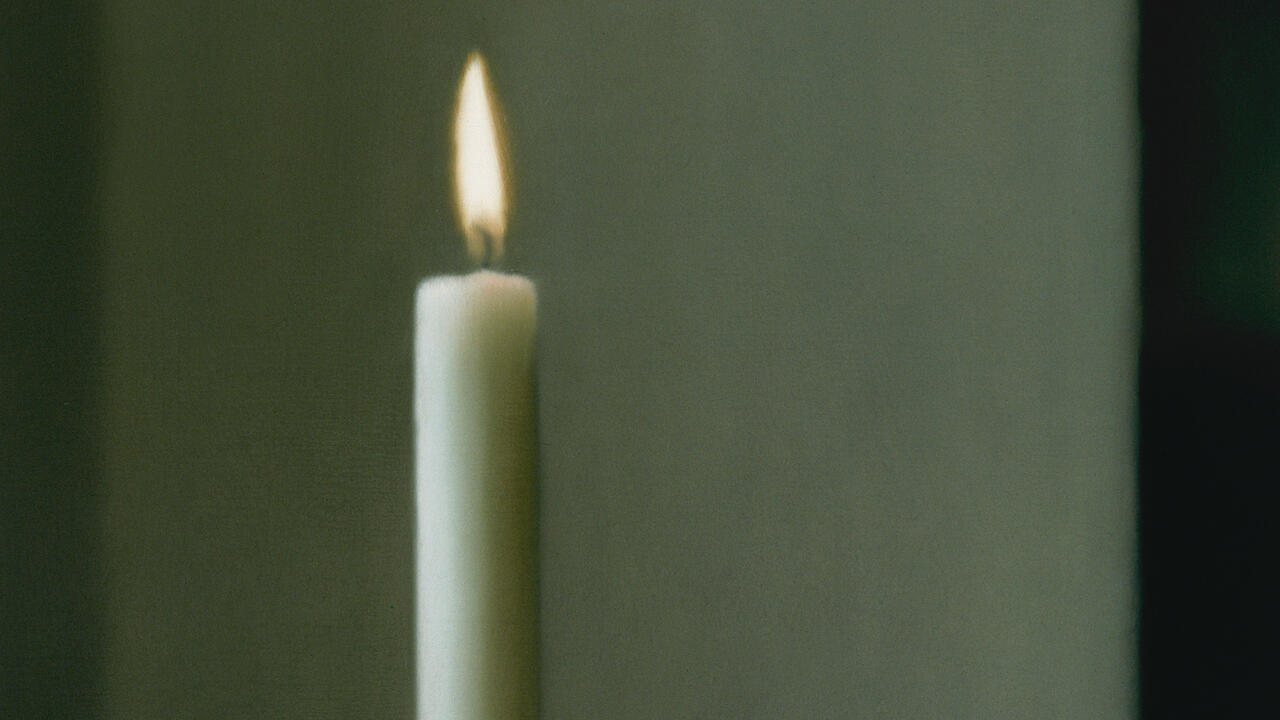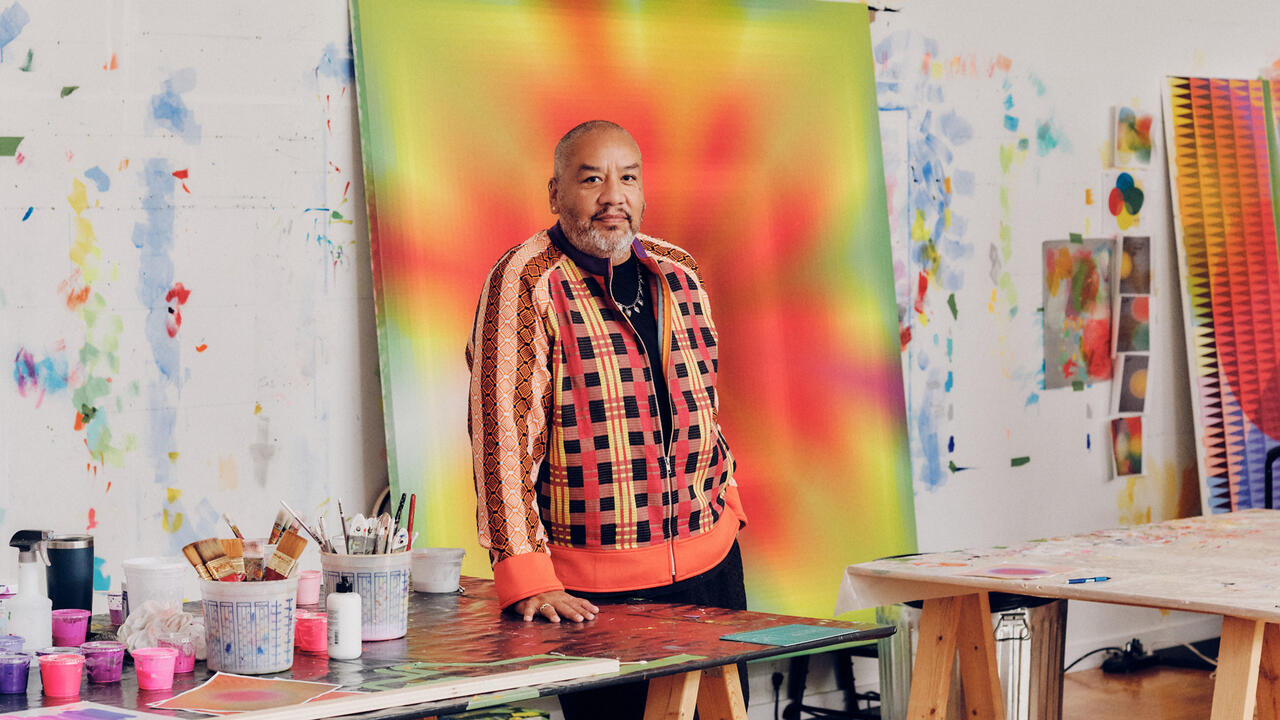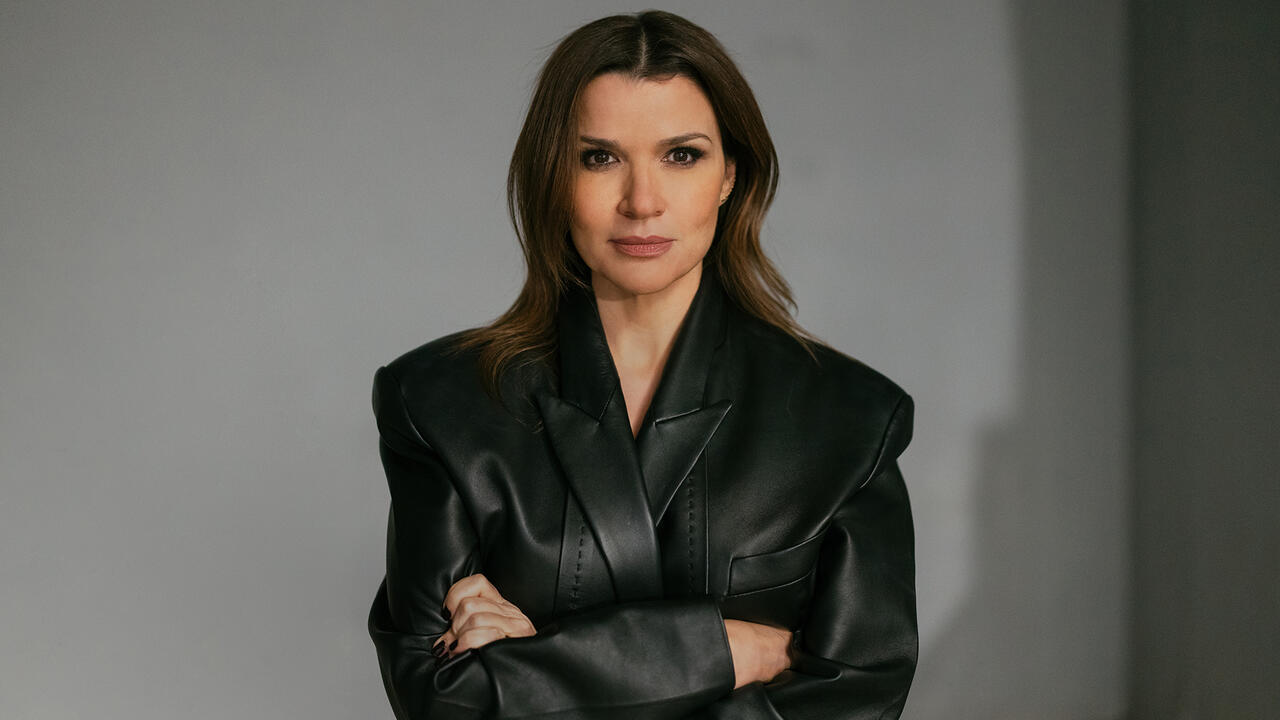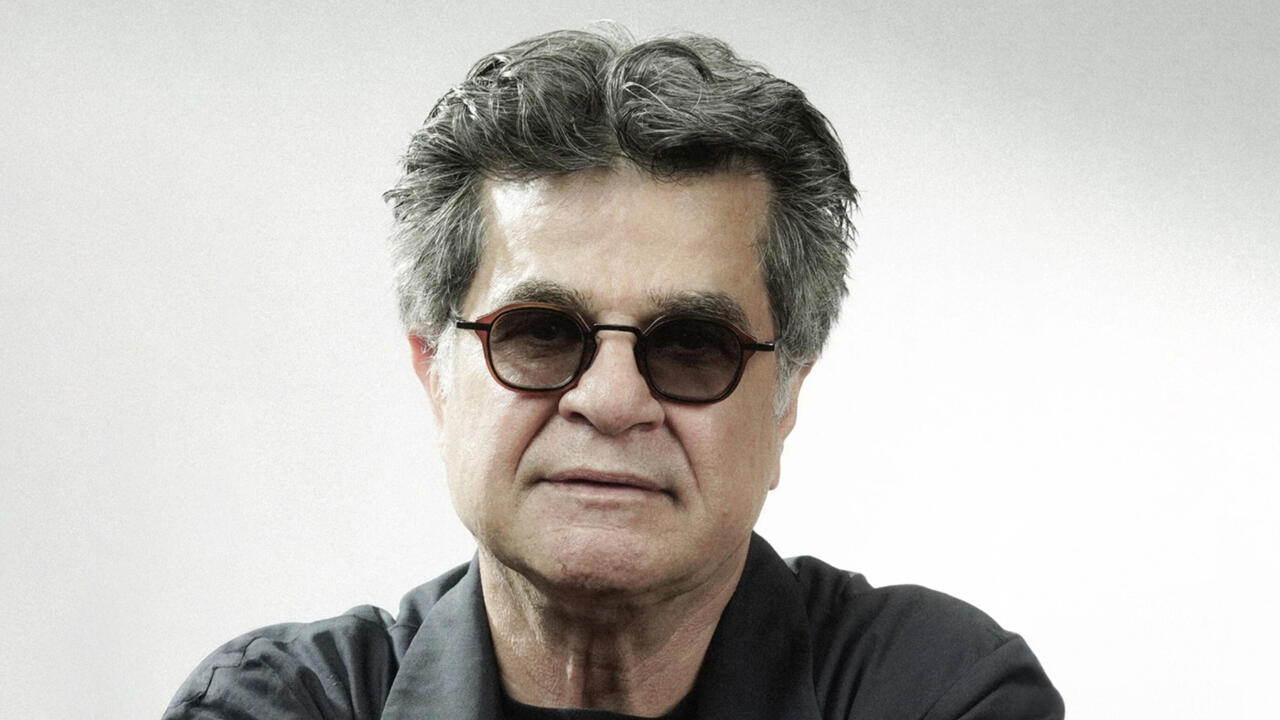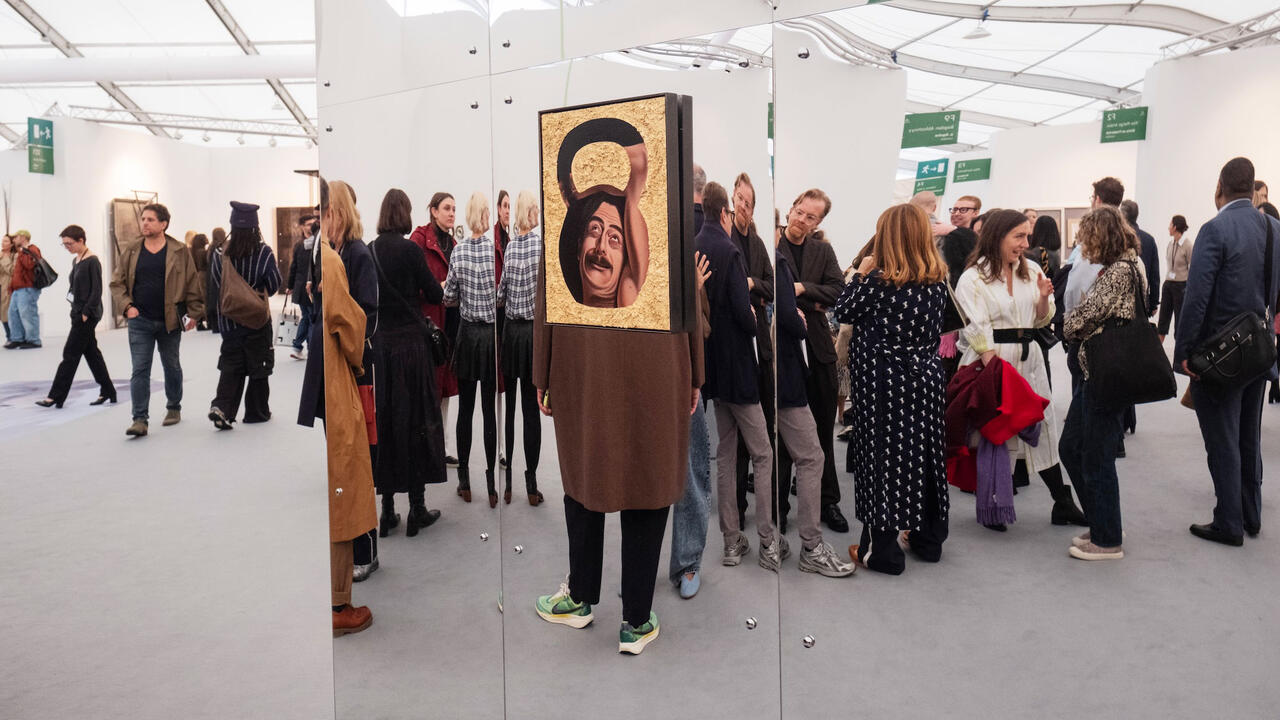Don't Believe the Hype
Daniel Pflumm was a central figure in the cultural scene of 1990s Berlin. Pflumm rarely gives interviews. Jan Kedves and Dominikus Müller spoke with him
Daniel Pflumm was a central figure in the cultural scene of 1990s Berlin. Pflumm rarely gives interviews. Jan Kedves and Dominikus Müller spoke with him

Born in 1968 in Geneva, Pflumm founded the legendary Elektro club on Berlin’s Mauerstraße which featured DJs such as Jeff Mills and DJ Hell from 1992 until its closure in 1994. At Elektro, one would find TV monitors playing videos made by Pflumm: short segments from recorded news and TV commercials, looped ad absurdum. Pflumm would repeat this at his next club he opened – Panasonic on Berlin’s Invalidenstraße (1995–97). As well as his activities as a club owner, Pflumm ran the techno label Elektro Music Department with Mo Loschelder and Klaus Kotai. In the late 1990s, Pflumm gained recognition as an artist, above all for his light-box works: company logos stripped of their identifying names. Among Pflumm’s designs is the red-and-white logo he made for Berlin’s Galerie NEU in 1999. Online, one can find a cluster of labyrinth- like websites Pflumm started making around 2000 and maintains to this day. Pflumm – who has had solo exhibitions at the Palais de Tokyo, Paris (2004) and at Hannover’s Sprengel Museum (2005–06) – lives in Berlin, where he works as a graphic designer as well as making music and art.
Jan Kedves & Dominikus Müller Daniel, you haven’t been very present in the art world recently. Your last solo show – at the Leopold Hoesch Museum in Düren – was four years ago.
Daniel Pflumm I quite like the fact that now I have ‘don’t believe the hype’ stamped all over me in big letters. There have been positives. For one thing, no more of the endless travelling that becomes one’s duty as a professional artist. Once, I was supposed to fly to Los Angeles to look at one rectangular room. When I refused, they said: ‘but you’re a professional artist!’ No more travelling, no more inspecting the pitiful spaces of global infrastructure, no more dealing with the obsessive need of business partners to talk fancy stuff with fancy people in fancy restaurants and spend all day pretending to be busy. I’m no longer forced to see myself as an instrument of urban restructuring, as a guinea pig for profit maximization, or some kind of lifestyle salesman.
What are you working on at the moment?
DP I’m mainly doing graphics and music. Various music projects for the labels I co-run, General Elektro and Atelier Records, with a number of mysterious underground acts.

You were never just an artist. You have always produced techno and run labels – like Elektro Music Department with Klaus Kotai and Mo Loschelder. The clubs that you ran, Elektro and Panasonic, set the standards for minimal techno in the 1990s.
DP My approach to running a club was an artistic or socially-orientated one, based loosely on Josephs Beuys’ concept of social sculpture. You’d think it would be easy to start a club here in Berlin, the club capital of the world. But most clubs are only interested in money, self-promotion and abusing their power – classic traits of antisocial sculpture. Incidentally there are several kinds of antisocial behaviour: one common tactic is for people who are well off to distance themselves from those who are less well off. How antisocial is that? Setting yourself apart is antisocial by definition. Anyway, telling people what they should or should not do and how they should live is ridiculous and should be made illegal.
Elektro and Panasonic were among the first Berlin clubs to install television sets. These showed your videos. How did that come about?
DP Back then my partner Gereon Schmitz and I also wanted to make television programmes. In the 1990s, we had our own production company, called Hallo TV, and the material we produced was broadcast-standard. Unfortunately, as we discovered, no one in television actually works freely, and anyone with influence asserts it over others. That’s how Elektro became the first club with its own TV channel. The goal was the same as for conventional TV channels: we wanted people to watch.
In video works like Neu (New, 1999) and Europäischer Hof (European Court, 2002) you worked with a highly polished advertising aesthetic, featuring looped sequences of liquids, gels and other viscous substances. Do you follow what younger artists from the so-called ‘Post-Internet generation’ are doing, people like Katja Novitskova, Josh Kline or those that populate the website DIS Magazine? There seems to be a visual similarity here.
DP In the 1960s, too, there were some great videos that look not unlike mine, some of which inspired me. The audio-visual medium is very limited. It has always relied on human forgetfulness. If the outside world were more interesting, video would have been over and done with long ago. Right now we’re finding ourselves in the nth self-referential loop of TV and the Internet: any idea worth having is repeated and recompiled hundreds of times. Elsewhere, a battle to define perceptions and grab attention is raging between art and commerce. The work of other artists who use similar motifs and aesthetics is part of that battle.
At the time, what interested you about the themes of purity and radiant cleanness? Toothbrushes are a recurring motif, for example.
DP What is the artist trying to tell us here? It’s about how the advertising industry changes the world: hygiene in combination with ideals of beauty and the cosmetics industry – and all the constraints that result. People today really do look different from people ten years ago; they behave differently, live differently. Today people are scared of doing something wrong or looking wrong, they persuade themselves they want to look as good as possible and do everything right – boosting sales for the consumer industry, our helpers in the never-ending search. People these days live in fear, spread by TV and the media. It’s interesting how living spaces, too, are arranged to conform to Hollywood ideals, emptied of life and generalized. Homes that are furnished strangely or left in their natural state, like mine, are scorned.

Compared with the brilliance of today’s HD productions, your videos look pixelated and ‘low-res’. Did you realize at the time that in 15 years, although the content would still be topical, the technology would betray their age?
DP By today’s standards, even the Discovery Channel from five years ago looks crap. The first videos Gereon Schmitz and I edited were made using video cards with 1.8 gigabytes of memory – about ten minutes of footage – which at that time was a lot. The standard was S-VHS, but you could tune it up. I always tried to get the best resolution, not least because I actually wanted to work in television. Around 1997 came Mini-DV, the picture got slightly better, the videos longer, the cassette racks smaller. My current transition to HD is taking longer than planned because, as usual, the technology is taking time to mature – and I’m not going to be a pioneer, here.
It is somewhat surprising that your videos – unlike almost everything else, it seems – are not available on YouTube.
DP Someone uploaded my videos, but I had them all deleted. I don’t want to make ‘Youtube’ more interesting. I see it as a huge bubble that kills time and individuality and I hope it will burst soon. I also don’t want to generate atomic waste for the next 2,500 generations just so a bunch of kids can let even stranger images into their heads and stop dreaming – which is what they should be doing. Youtube shouldn’t replace dreams.
Why atomic waste? Because the servers use so much power?
DP The servers use power whether or not anyone is actually watching the videos. There are server farms located somewhere in the desert guzzling the equivalent of several nuclear power stations. Google claims rather vaguely that its consumption is around half a nuclear power station – it’s not clear whether or not Youtube is included in this estimate – but I don’t believe it. No one can check the figures anyway. Apart from the terrible audio quality, there are other arguments for not watching videos or listening to music on Youtube.
You seem to have a serious aversion to the Internet, right? On your website danielpflumm.com it reads: ‘Already in the ’80s everybody knew that interactivity would only serve as a tool for thought-surveillance.’
DP Scepticism towards a man-made brain – the computer – shouldn’t ever really be suprising. We’re now seeing the umpteenth generation whose blind enthusiasm for technology and collective fear of missing out causes them to buy everything ‘recommended’ to them by manufacturers, lest their computers cease to function. If all these machine brains were now to be linked together, the result would have about as much to do with an archive of humanity as a herd of cows has to do with a farm. Since the advent of Facebook and smartphones, some people seem to find it hard to sit down for ten seconds without the urge to connect to someone online. The Internet is in the process of turning human communication and language into the emptiest promise the world has ever seen.
But isn’t interactivity a promise, too?
DP In the beginning, you were meant to click on the ‘click here’ button to get to the next page. Stage two was the choice of two buttons to get to one of two different pages. You had to ask yourself: what good is this to anyone? Basically, it was a mindless new form of television, except you were supposed to believe you had something to contribute and that you wanted to do so. Even at that stage, you were already leaving behind data about your thoughts and behaviour. And since then, this data has been collected. If you think what complex profiles various companies and the US government have been able to draw up for ‘rebellious persons’ and their networks, then the only reassuring thing is that the genuine rebels must have remained sceptical. And what has recently become public knowledge is just, well, the Snowden of the iceberg.
When did your fascination with new technologies begin to wane? At Elektro, the club you ran from 1992 to 1994, there was also a chat station that was part of Clubnetz – a kind of early local Internet that allowed people at different Berlin clubs to communicate with each other.
DP In the early ’90s, there was a small block of houses in Mitte that we were free to use. In this space, a lot of people came together, often fortuitously. Groups including the artists collective Botschaft e.V. – which in turn had various sub-groups – gave rise to a number of projects in which many people were involved. Clubnetz was one such project. So was the Elektro club. The conditions were perfect: no surveillance and, on account of the city’s general disarray, basically no police. Hierarchical structures existed only in the imaginations of those involved. The first rude awakening was in 1995/96, when the first smart arses came, walking around with their briefcases in all seriousness – like we’d been doing before as an ironic Dadaist gesture. And they’re still doing it. Clubnetz itself was a project by the Handshake group, an early Internet-based version of something that also provided the name for our production company_ Hallo TV_. At Documenta in 1992, the artist group Artcom presented a project under the name Van Gogh TV that combined the technical possibilities of the time – video and text chat, cameras with sound, telephony in general – broadcast on a decentralized basis from small public studios, so-called ’piazzetta virtuales’, which could be watched on public-access channels, all combined in a TV image whose core message was: ‘Hello.’

Your website branches off into a labyrinth of interlinked domains and websites that you’ve been programming since around 2000: brutalo.com, seltsam.com, pupsi.com and so on. [seltsam and pupsi would translate as ‘strange’ and ‘farty’ in English.]
DP I wouldn’t go so far as to call it ‘programming’. I began registering domains out of the pleasure of inventing names. At the same time, it wasn’t supposed to be at all spectacular; I just wanted to establish a few nice project names, although not speculatively, to make money – I was too stupid for that, as you can tell by the names I chose. Luckily, being too stupid or too clever is often the same thing.
Visiting your sites involves a lot of clicking around. There are hidden links all over the place, sometimes you end up somewhere else, and sometimes nothing happens at all. It seems like you want to ridicule the process of online navigation and ‘being interactive’.
DP Big companies have an interest in making their websites as sophisticated and complex as possible, showcasing the latest technology. To build such websites, and to read them, you have to be able to think like a machine. But that’s not how I imagined my life. In my view, the ‘Venice’ aspect of the Internet has yet to be fully developed. For me, the great thing about Venice is its chaotic quality. You let yourself drift and confusing paths lead you to endless treasures. Without a map or GPS, of course. On the Internet, you’re always being pushed around. Herded for clicks. To find real treasures online, you need to know their location. In the old days, there was something called Situationism.
So you keep thinking up new names for your domains, but hidden on one of your sites is the phrase: ‘Namedropping is power abuse’.
DP Are you asking whether I’ve ever contradicted myself?
More whether it’s about taking namedropping to absurd lengths – by strategically uploading more and more increasingly absurd names …
DP It was more about taking the Internet to absurd lengths. But when I was buying all the silly domain names, things like the online travel portal Opodo didn’t yet exist. I mean, how can anyone give their company a dumb name like that? Or ‘Zalando’: in your face, all over the place. Dreadful. From Opodo to Zalando to Yahoo to Google, for every new word that crops up, an old one falls off the waggon. Hello ‘Gliglaglu’, goodbye ‘windmill’.

Elsewhere your strategy seems to be: no new names, less information. Your lightboxes are based on the idea of emptying out company logos by removing the names. Likewise, the bar that you ran after Panasonic, at your studio in Kreuzberg, until 2010, had no name. Or perhaps it was called ‘Atelier’, that was never clear.
DP Together with my studio partner, SVN, we also spent five years drawing and distributing flyers which provided practically no information. Generally speaking, communicated information should be substantial. The business world and its advisors have realized this too. But some moderation wouldn’t go amiss. People need to stop disseminating details about their personal intentions, technical possibilities and professional networks. This doesn’t do anyone any good, least of all the people themselves. As soon as information is viewed as capital, no one wants to communicate anything relevant anymore. We need to get back to good old-fashioned conversations where people trust each other, share their thoughts and play with ideas. Only then can things lead anywhere – slowly building confidence in the outside world and not attributing importance to every single idea.
In Berlin in the 2000s, there was a huge push towards professionalization in art as well as the club scene. What did you make of this at the time?
DP For as long as I can remember, everything has been getting steadily more expensive, more complicated and less free. And there’s no end in sight. Even before ‘professional’ began to be overused in everyday business-speak, the words ‘professional’ and ‘artist’ are utterly at odds. A fact that pretty much sums up the ethos of the club scene that developed in that period, too.
And what do you think about Elektro being referred to as ‘one of the seeds from which today’s Berlin grew’ – as journalist Ulrich Gutmair put it in his book Die ersten Tage von Berlin (The First Days of Berlin, 2013) ?
DP There are lots of legends surrounding Elektro, and that is one of the funniest. For me, Elektro was the perfect club. It was located in the middle of the Mitte neighbourhood around Mauerstraße, right next to WMF, Frisör, Botschaft e.V., Tresor, and slightly further away, E-Werk. As many people moved into the area, there was a large regular crowd. People would meet at a club in the evening and come up with projects for the following day. But not on some pseudo-professional level. It was more like: ‘We’ll have another five beers, we’ll have a good time, and we’ll also make something useful out of it’. Well, maybe forget the ‘useful’ part.

One symbol of today’s Berlin is the luxury restaurant Grill Royal in Mitte, co-founded by Thilo Wermke. Wermke is a co-owner of NEU, the gallery that represents you.
DP Init, the club in a former East German supermarket on Chausseestrasse that I co-ran with the NEU gallerists in 1999, was already a step too far in that direction. It was still based in club culture, but unlike Elektro or Panasonic it had an obvious bias towards art. Today, the Grill Royal restaurant runs on a similar model. You might still run into some good people there, but only in the company of golden forks and diamond chandeliers, in a social refrigerator. I’ve been twice.
Grill Royal epitomizes the property development in Berlin that makes it harder and harder for clubs to find good spaces.
DP I must protest the innocence of Grill Royal here. When it opened sometime in the mid-2000s, Mitte and Friedrichstraße had already been sanitized five times over. The complex of real estate, art and gentrification is a hoot. The art scene allows itself to be instrumentalized without criticism. The grand moguls of the art scene are the very same people who pocket the profits from real estate. In the process at large, the artists don’t have a chance.
Translated by Nicholas Grindell





